2011 Nissan Juke: Here’s to the Real SE-R Successor
- March 21, 2011
- Featured, Nissan, On The Road: Driving Impressions
- Posted by Ed Kim
- 3 Comments
Long ago, back in 1991, Nissan launched what many thought of as the spiritual successor to the BMW 2002: the Nissan Sentra SE-R. It was a lightweight and tossable compact car that was inexpensive and an absolute blast to drive. Since then, Nissan has kept the SE-R name alive in subsequent generations of Sentra, but each one has gotten less and less thrilling.
Fast forward to 2011. Around the world, automakers are bringing small and sporty crossovers to the marketplace, addressing younger and more style-conscious consumers’ need for entry level vehicles with space and standout style. Nissan has jumped into the fray with the Juke, a product designed first and foremost for the European market. The U.S., which seems to prefer its crossover products big and bulky, is a secondary market. However, given that today’s younger Americans are expressive, enjoy technology, often accept miniaturized products, and value standout design, Juke has found its way across the pond nonetheless.
Juke certainly looks like no other crossover or SUV product out there. It sits fairly close to the ground and at first glance looks more like an expressively styled small hatchback. And then there’s that face. Insect-like and definitely not forgettable, it is polarizing to the extreme: our informal poll of passerby indicated that people either loved it or hated it. There was no in between.
So let’s cover the mechanical basics really quickly here. It’s based on Nissan’s B-platform that is also the basis of the worthy-but-boring Versa and the boxy Cube. It’s available with front or all-wheel drive. And then there’s the engine. Not content to follow the convention usually followed in expensive cars of offering an anemic base engine and a powerful upgraded optional one, Nissan instead chose to equip all Jukes with a 188HP 1.6L DOHC 16v turbocharged and direct-injected four-cylinder engine. Yes, this is some of the utmost in advanced engine technology and real power, all for under $19,000.
The standard transmission is a six-speed manual, but most buyers will choose the CVT automatic. Now, I usually detest CVT transmissions because of the way they make the engine drone, and also because they make the engine feel completely disconnected from the transmission and the wheels. Nissan addresses this with a “Integrated Control” (I-CON) interface that allows you to operate the car in standard CVT drone mode, fuel efficient ECO mode, or the far more fun Sport mode. Interestingly, the I-CON interface uses the same color display, knobs, and buttons as the automatic climate control; the driver can easily toggle back and forth between I-CON and climate controls.
When Sport is selected, the CVT adopts “fake” gear ratios so that it feels like a lightning-fast dual clutch transmission, making the car simply come alive. It’s probably no faster in this mode than the CVT’s default mode, but it feels worlds better. So much that the Juke is one of the few cars I would actually buy with a CVT transmission; it’s just so fun and engaging – descriptors I have never before used to describe a CVT. Sport mode also tightens up the electronic steering effort too. It doesn’t offer any more feedback from the steering, but it definitely feels sportier and more fun.
Of note is the ECO mode, which lightens the steering effort, minimizes air conditioner operation, and blunts the throttle’s and CVT’s responses to encourage best possible fuel economy. It’s not nearly as fun in this mode, but it definitely helps the ham-fisted driver get the most miles per gallon.
But forget ECO mode; select Sport and have a blast. 188HP in a vehicle this small equates to very strong and responsive acceleration. And its small size and firm suspension tuning mean that it’s a blast through the corners. No worries about the elevated ride height either; the car never feels tippy and the higher seating position only means you can see apexes better. Seriously, this is the most fun small Nissan since that original Sentra SE-R. Actually, it’s probably even more fun.
The car’s feature content is noteworthy too. Aside from the very cool or bizarre styling (depending on how you view it), the car has plenty of neat features. Bluetooth, USB, iPod control, and seventeen-inch alloys are standard. A navigation system with real time traffic and a loud Rockford Fosgate audio system is an absolute steal at only $800. You can even get leather, should your backsides desire it.
Keep in mind, though, that this is a small vehicle. Our family of three (me, the wife, and an infant) were a tight squeeze. In fact, we had to install the rear-facing infant carrier in the middle rear seating position (which lacks LATCH anchors) because installing it in an outboard seating position squeezed the front occupant into the dash. And the diminutive trunk was a tight fit for our stroller; we had to remove a wheel to get it to fit on its side.
But Nissan didn’t have small families in mind when it designed the Juke. More like young and fashion conscious singles who want great performance, standout style, and a modicum of practicality for a reasonable price. On those counts, Juke not only delivers, but flat-out hits it out of the park.
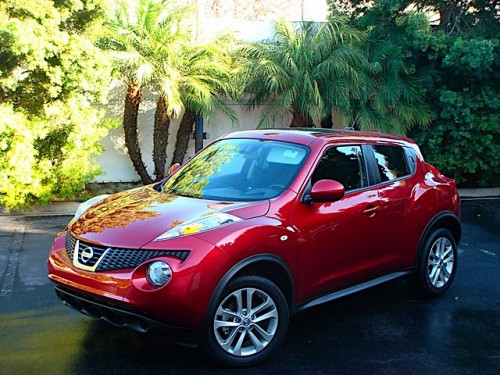
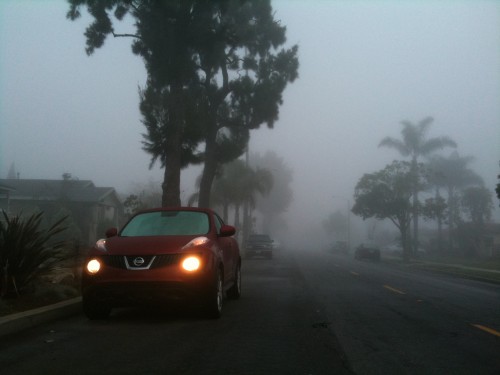
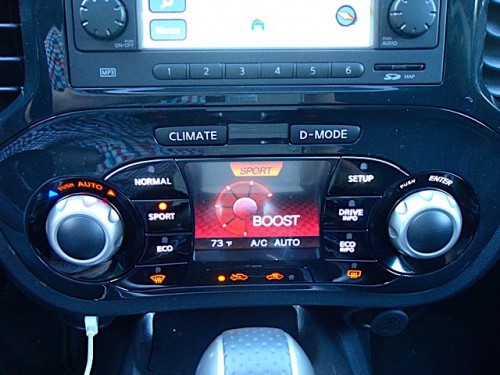
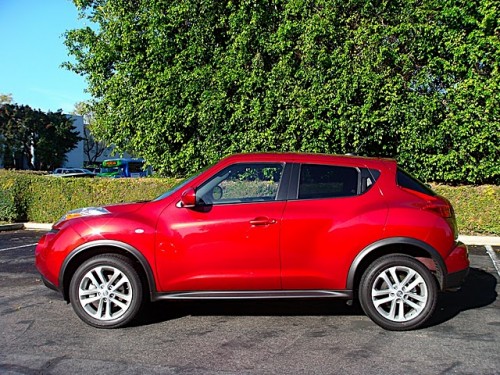
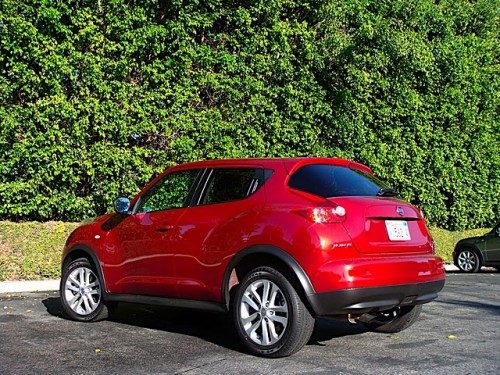
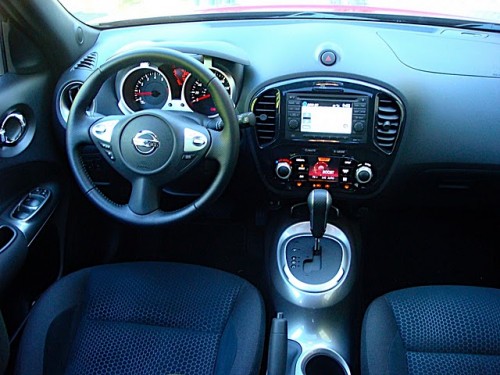
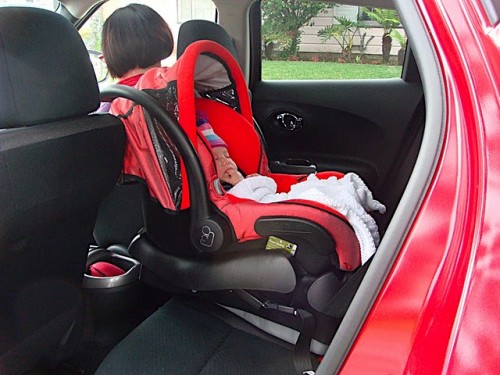
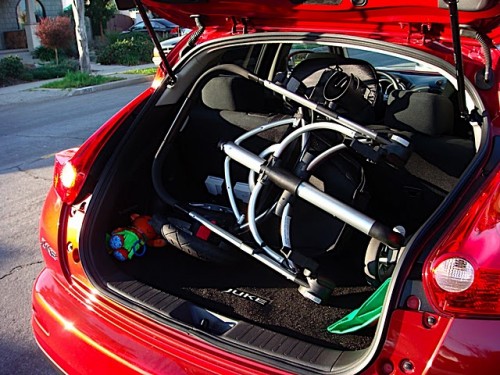


3 Comments
What stroller and infant seat (and year) are you using here. My husband and I are interested in the Juke but are trying to figure out the best car seat and stroller for the space. I’ve been comparing baby gear dimensions/quality and would love to know what you’re using in the two pics above. Any suggestions are also welcome!! THANKS!
We used a Quinny Buzz 3 and a Maxi Cosi rear facing infant carrier. The Quinny could fit in the trunk on its side, if you take one of the rear wheels off.
Nice article